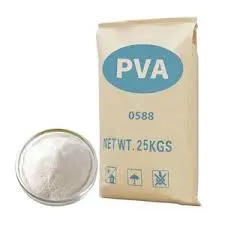Understanding RDP Adhesion Mechanisms and Applications
RDP, or Redispersible Polymer Powder, has emerged as a crucial component across various industries, especially in construction, adhesives, and coatings. One of its most significant attributes is its ability to enhance adhesion properties in formulations. This article delves into the mechanisms of RDP adhesion and explores its applications in modern materials.
RDP is a dry powder consisting of polymeric materials that, upon being mixed with water, can revert to its original emulsion form. This unique property is what makes RDP an essential additive in construction materials such as tile adhesives, plaster, and self-leveling compounds. The redispersible nature of these powders allows for easy integration into dry mixes, providing significant improvements in performance without the need for complicated processing steps.
Understanding RDP Adhesion Mechanisms and Applications
Moreover, the RDP particles interact chemically with the cement hydration products. The polymer chains can form hydrogen bonds and van der Waals forces with the cement matrix, further enhancing the bond strength. This chemical interaction is vital in environments where materials undergo thermal expansion, contraction, or moisture exposure, as it helps maintain the integrity of the bond over time.
rdp adhes

Another critical aspect of RDP adhesion is the formation of a continuous film upon drying. As the water evaporates, the RDP particles coalesce, leading to the development of a flexible polymer film that encapsulates the cement particles. This film not only provides additional adhesion but also improves the overall flexibility and crack resistance of the final product. Such attributes are particularly beneficial in applications where movement or vibration is expected, such as in floor and wall tile installations.
The versatility of RDP also extends to various formulations. Different types of RDP can be tailored to meet specific adhesion requirements, whether for improving water resistance, flexibility, or even weathering resistance. This adaptability makes RDP a valuable additive for manufacturers aiming to enhance product performance and achieve compliance with stringent industry standards.
In practical applications, RDP-modified adhesives and mortars have demonstrated superior bonding capabilities compared to traditional formulations. For instance, tile adhesives featuring RDP can adhere more effectively to porous and non-porous surfaces alike, thereby expanding the range of substrates that can be effectively bonded. Additionally, the improved workability of these mixtures allows tradespeople to apply products more efficiently and achieve better finish quality.
As the construction industry continues to evolve, the demand for high-performance materials is on the rise. RDP serves as a vital link in developing innovative solutions that meet these demands. Its contributions to adhesive strength, flexibility, and overall durability underscore the importance of incorporating RDP into modern formulations.
In conclusion, understanding the mechanisms of RDP adhesion is essential for anyone involved in the development or application of construction materials. The unique properties of RDP not only enhance the adhesion capabilities of products but also contribute to their enduring performance under diverse conditions. As industries increasingly seek sustainable and efficient solutions, RDP stands out as a key player driving innovation in adhesives and beyond.
-
Premium Detergent Grade HPMC Hydroxypropyl Methylcellulose: Superior Thickening & StabilityNewsAug.31,2025
-
HEC 100000 Hydroxyethylcellulose for Paint | Superior ThickeningNewsAug.30,2025
-
Wall Putty Rdp Powder Packaging DesignNewsAug.29,2025
-
Introduction to Hpmc Hydroxypropyl Methyl CellulosNewsAug.29,2025
-
Hpmc Industri Grade IntegrationNewsAug.29,2025
-
How to Choose the Right Construction AdhesiveNewsAug.29,2025




